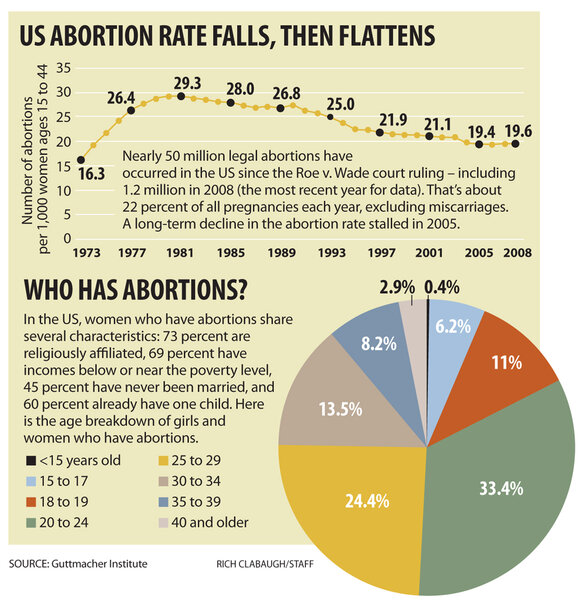This varies drastically, depending upon where she lives, what kind of insurance she has, and how much money she has.
A woman in, say, a metropolitan part of California – where providers are fairly numerous and a fair amount of local public funding will help to pay for the procedure – may have pretty easy access. A poor woman in Washington, D.C., where public funding of abortion is prohibited, may have a hard time paying for it. And for a poor or middle-class woman in South Dakota, where just one clinic operates (on a part-time basis) and anyone seeking an abortion must navigate a labyrinth of counseling and delay restrictions, it may prove virtually impossible.
When it comes to reproductive rights, “there’s very much a class divide,” says Elizabeth Nash, state issues manager for the Guttmacher Institute, an abortion-rights research organization. “Women who have money and resources and are used to the health-care system will be able to access abortion.... Women who are poor – these restrictions make it more difficult for them.”









